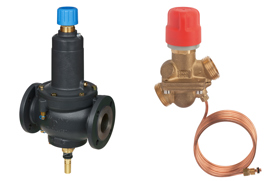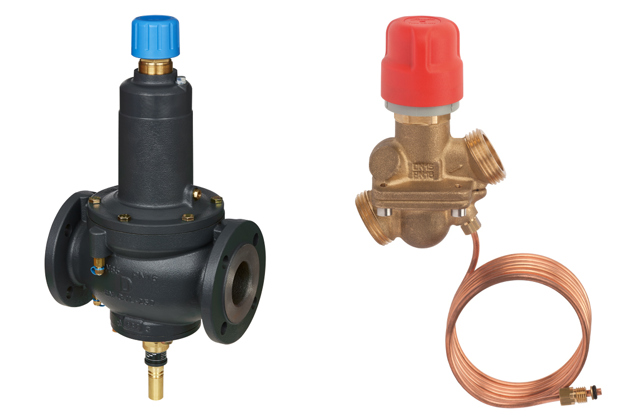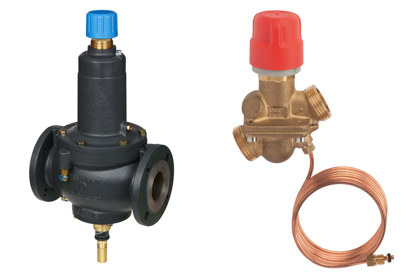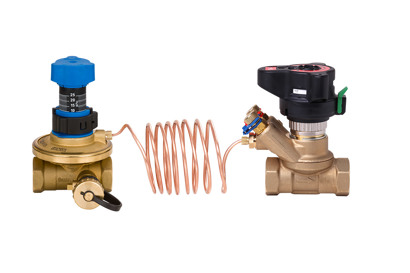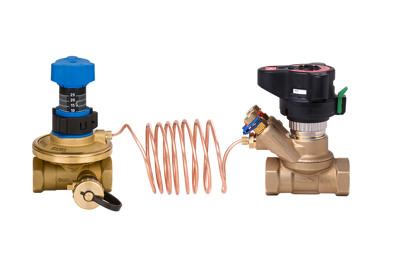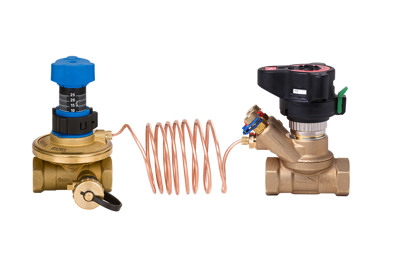Hydronic balancing was the solution when retrofit of the heating system with new thermostatic radiator valves did not return the benefits envisioned. By installing Automatic Balancing valves, Danfoss helped relieve the noise problem engendered by the new valves. At the same time, hydronic balancing returned average savings of 14 percent on the energy bill.
It all started when all radiators in five 9-storey apartment buildings in Milan were fitted with thermostatic radiator valves (TRVs). It was intended as a big improvement for residents and building owners with improved indoor comfort and savings on the energy bill. Instead, complaints from the residents started rolling in. The whistling of the radiators disturbed the peace in the quiet winter evenings in the cozy flats. At the same time, the technical manager of the building complex did not register the promised energy savings after the installation of the TRVs.
It was a bitter pill to swallow that the retrofit did not fulfill expectations and for the first time in the history of the buildings, the heating system gave rise to complaints about noise from the radiators. After contemplation of different paths of actions, the consulting engineer decided to contact Danfoss to find a solution to the noise problem and help realize the energy savings promised by replacing manual valves with TRVs.
Automatic balancing valves dealt with the noise problem
Careful inspection and diagnosis of the problem led Danfoss heating expert Luca Biliero to propose the installation of automatic balancing valves on the risers. This widespread solution solved the technical issue of pressure fluctuations, which is often the cause of system imbalances and noise problems. Three years into operation, the retrofit with TRVs and Danfoss ASV automatic balancing valves has returned energy savings of more than 10 percent every year. For the building owner this means that the payback time for the installation is only about two years.
Improved indoor comfort
Poor balancing with uneven heat distribution and high energy bills is a widespread problem. Currently, it is estimated that 80-90 percent of the building stock is equipped with inefficient heating systems. Many of them have a poorly balanced two-pipe radiator system. They waste precious energy and lead to complaints about lack of heat, system noise, and in some cases even unfair heat cost allocation.
Automatic balancing valves provide a simple, reliable, and cost-effective way to create a proper hydronic balance in two-pipe heating systems. This was also the case in Milan, where Danfoss ASV automatic balancing valves now secure an even flow and eliminate pressure fluctuations in the system, even to the most remote apartments. “The customer chose the ASV valves from Danfoss due to the technical features of the valves and the documented benefits that would secure fast return on investment. At the same time, the installation of the valves on the risers was fast and easy with little inconvenience to the residents”, says Luca Biliero. The installation was completed in just two weeks under careful supervision by a Danfoss technician.
Related products
-
if (isSmallPicture) {


 AB-PM Automatic balancing valves
AB-PM Automatic balancing valvesAB-PM is a combined balancing valve providing both differential pressure control and flow limitation. The valves eliminate pressure fluctuations at full load and partial load conditions and can be equipped with an actuator to allow zone control.
-
if (isSmallPicture) {


 Automatic balancing valves
Automatic balancing valvesAutomatic balancing valves provide a dynamic balancing solution for HVAC applications. The valves eliminate pressure fluctuations occurring in variable flow systems, such as two-pipe radiator systems, at partial load conditions. These types of valves can also be used in floor heating and comfort cooling applications.


